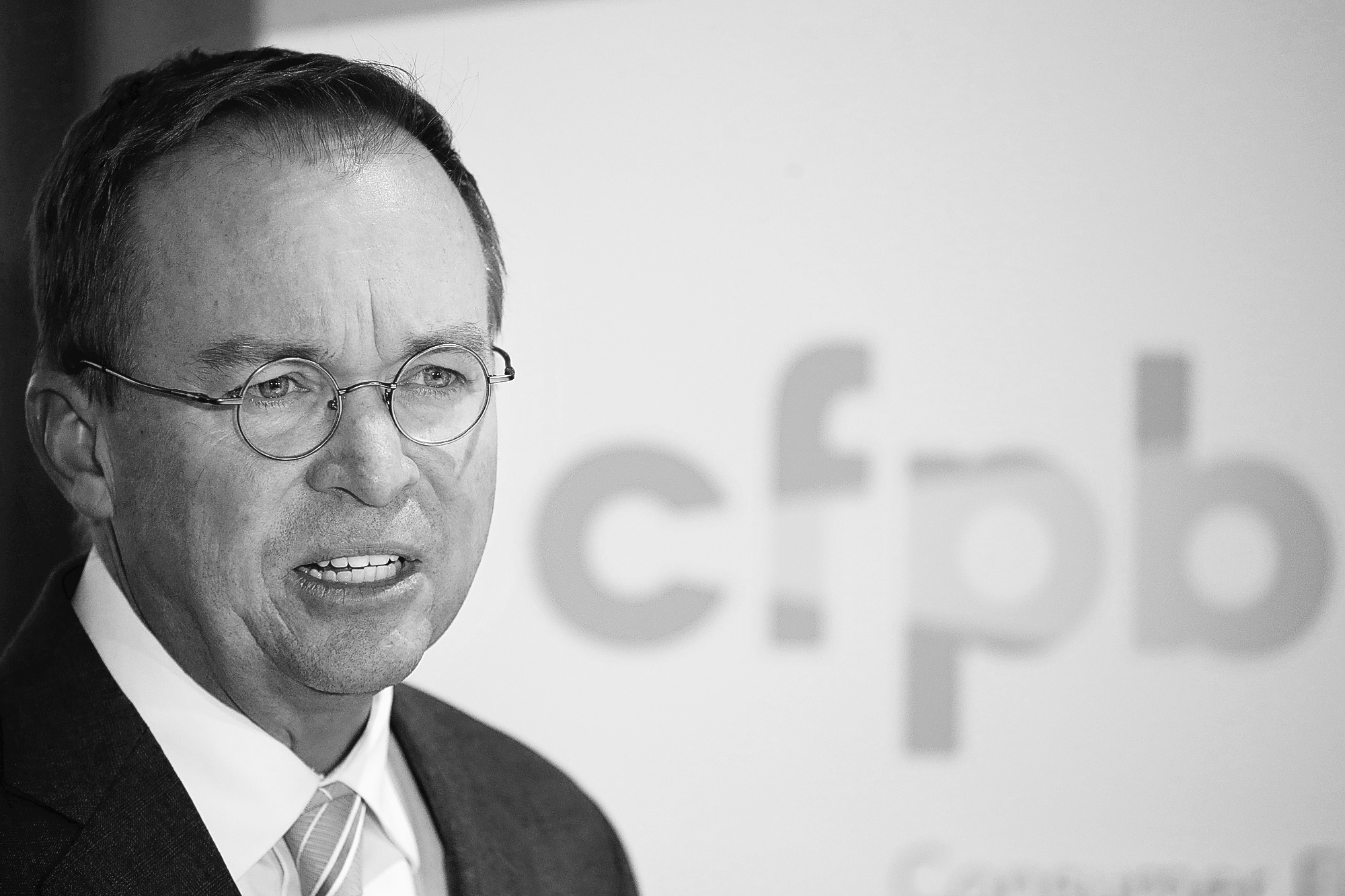
By KEN SWEET
AP Business Writer
NEW YORK (AP) — The Consumer Financial Protection Bureau is dead. Long live the Bureau of Consumer Financial Protection. That’s the message the Trump administration is pushing, at least, in what on the surface seems like a minor tweak to the name of the federal consumer watchdog agency created after the Great Recession to protect consumers against banks, credit card companies, debt collectors and other financial companies. But critics see it as a not-so-subtle effort to telegraph the abrupt ideological turn the bureau has taken since Trump-appointee Mick Mulvaney became acting director last year.
Under Mulvaney, the bureau has proposed revisiting or rolling back the rules, regulations and policies that the Obama administration put into place when it controlled the agency. The bureau has dramatically cut back on enforcement actions as well. The Dodd-Frank Act created a “Bureau of Consumer Financial Protection” in 2010. But, except for the occasional court filing, the bureau was consistently referred to as the Consumer Financial Protection Bureau, or CFPB. Mulvaney took over the bureau as acting director in late November, when Obama appointee Richard Cordray resigned. Since then, the bureau has increasingly referred to itself as the Bureau of Consumer Financial Protection, or by the acronym BCFP.
During testimony last week on Capitol Hill, Mulvaney said, “The Consumer Financial Protection Bureau does not exist.” But swapping “Bureau” from back to front is not a simple word shuffle, said Lisa Donner, executive director for the advocacy group Americans for Financial Reform. “Doing that signals you want to take the emphasis away from serving consumers — which unfortunately is what Mulvaney’s been doing in many ways — and put it on ‘this is a bureaucracy’,” Donner said. Republican lawmakers, who have long had issues with the bureau, have been happy to go along with the name change. Jeb Hensarling, chairman of the House Financial Services Committee, said in a statement “I commend Acting Director Mulvaney’s efforts to follow the law as written.”
“I’ve looked at the statute, and I don’t see ‘CFPB’ in the statute anywhere,” said Rep. Barry Loudermilk, R-Georgia, at last week’s hearing. The bureau has quietly rolled out a new logo as well. Since early in its existence, the CFPB used a green, lowercase text logo using the bureau’s initials. The new logo is a more traditional government seal, with an eagle in the middle, and the name Bureau of Consumer Financial Protection on the perimeter. The seal is similar to other seals used by agencies overseeing the financial industry, including the Federal Reserve and Treasury Department. The logo got its first use last week when the bureau announced its $1 billion fine against Wells Fargo. A logo is often the most visible part of any company or organization, and branding experts say the change is quite stark.
“You couldn’t find a better example of contrasting messaging here. One says ‘we are here to help’ while the other says ‘we are the mighty and here to protect,'” said Kit Yarrow, a professor of psychology and an expert on corporate branding at Golden Gate University.
The push to change the bureau’s name is still in the early stages. The bureau’s website still uses the old logo, and the bureau still refers to itself as the CFPB across its webpage. Email addresses to the bureau still end in @cfpb.gov. But the CFPB — or BCFP — has requested that The Associated Press change its entry in the AP Stylebook to refer to the agency as the Bureau of Consumer Financial Protection.
“We are in the process of updating our own materials to reflect our legal name and would appreciate your (Stylebook) being similarly updated,” bureau spokesman David Mayorga said in its request. The AP’s Stylebook, published since 1953 and periodically updated, is a road map of rules on spelling, language and journalistic style for the company’s journalists. It is also widely used as a blueprint throughout the news industry. “The Associated Press routinely reviews suggestions for Stylebook entries and considers whether those suggestions will help to make our report clear, fair, accurate, consistent, and easy for audiences to use and understand,” said John Daniszewski, the AP’s vice president for standards. “In this case, we note that the Consumer Financial Protection Bureau website continues to use the initials CFPB.”



















